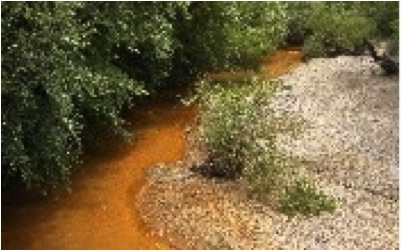Project Title: NEPA Assessments at the Tar Creek Superfund Site, Ottawa County, OK |
Client: Department of Interior, Bureau of Indian Affairs |
 OAS has conducted numerous environmental service jobs on Indian lands in the southwestern United States spanning environmental compliance, hazardous waste characterizations, database development, groundwater monitoring, site assessments, and remediations. Much of this work comes to OAS from referrals by the technical managers in the BIA, Anadarko Area office and Washington, D.C. Compliance office. The work performed for the Miami Area Field Office entailed assistance with the NEPA compliance related to the sale of waste rock, “chat”, from Indian trust lands.
OAS has conducted numerous environmental service jobs on Indian lands in the southwestern United States spanning environmental compliance, hazardous waste characterizations, database development, groundwater monitoring, site assessments, and remediations. Much of this work comes to OAS from referrals by the technical managers in the BIA, Anadarko Area office and Washington, D.C. Compliance office. The work performed for the Miami Area Field Office entailed assistance with the NEPA compliance related to the sale of waste rock, “chat”, from Indian trust lands.
OAS Performed an Environmental Assessment evaluating the potential environmental impacts of excavating, grading, and hauling waste rock, “chat”, from Indian lands in NE Oklahoma. Past lead and zinc mining have left a legacy of environmental and health problems in the area. The sites under study encompass portions of the Tar Creek Superfund site, which complicates the NEPA assessment process. The chat operations in the tri-state area are under close surveillance by two EPA Regions, three states, and the Oklahoma Governor’s Tar Creek Task Force with subcommittees for Health Effects, Native American Issues, Water Quality, Chat Use, Mine Shafts, Subsidence, Natural Resource Damage Assessments, and Drainage and Flooding. Chat on private lands is being recovered in the vicinity for use as an aggregate in asphalt paving. There are 16 individual Indian sites where there is sufficient chat to sell. Initially, OAS was asked to perform an environmental assessment on a single site. The “Western” site was chosen for its proximity to human receptors and wetland and other critical habitats. Prior to finalization of that report, the Miami office made an urgent request for the “Sooner” site to be evaluated and an EA published, since there was a ready buyer for that site’s chat resources. Eventually, the fourteen remaining individual land parcels were evaluated by OAS for potential unrestricted sale and processing on-site of chat to private entities.
Impacts of particular concern locally were: lead in air, surface and water quality impacts, subsidence, wetlands protection, cultural resources and wildlife. Since the final activity on site was not defined, OAS assisted the BIA by developing reasonable operating strategies for the after sale processing of chat by private operators. This was required in order to develop standard operating procedures and site constraints to be sufficiently protective of public health and the environment and in order to provide the basic impact evaluations required by NEPA.
OAS conducted a cultural resource survey in support of the process. OAS published the report “Historical Survey of Indian Owned Mill Tailing Piles in the Picher Mining Field Ottawa, County Oklahoma”. The report provides a history of the mining district, review of the leases, summary of the operations for mining and milling and a delineation of the status of mills and tailing piles on Indian lands.
During the development of the EAs, OAS had lengthy discussions with the BIA technical and legal staff regarding the evolving definition of appropriate chat usage with respect to the EPA and state interpretations within RCRA, CERCLA, and NEPA. RCRA and CERCLA waste management regulations were also evaluated with regard to chat sales. A policy strategy was developed for the site. In order to assess impacts of the proposed chat sale under NEPA, OAS coordinated with and obtained data, reports, and input from:
- -US BIA
- -US Fish and Wildlife Service
- -US EPA Regions VI and VII
- -OK State Historic Preservation Office
- -Quapaw Indian Tribe
- -Board of Ottawa County Commissioners
- -OK DEQ
- -OK Department of Archeology
- -OK Water Resources Board
- -Miami, OK Area Economic Development
-
OAS prepared draft Description of Proposed Action and Alternatives documents, Operating Plan Requirements, and Environmental Assessment Reports. Communication in the interim was conducted primarily by telephone and followed by letter documenting these calls. Electronic mail with the BIA was prohibited by the Department of Interior during this period.